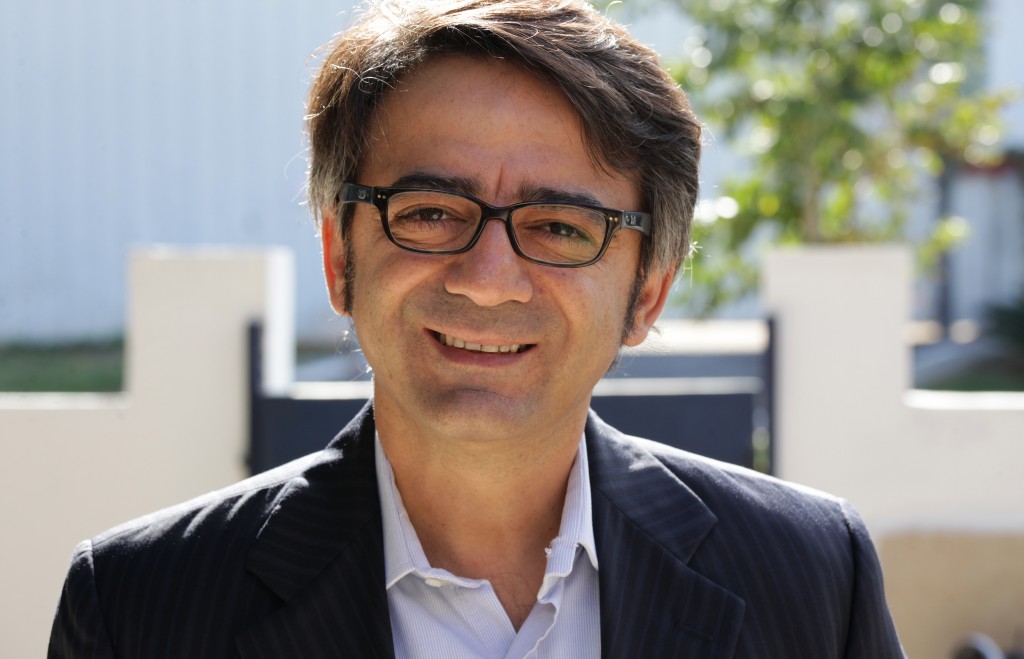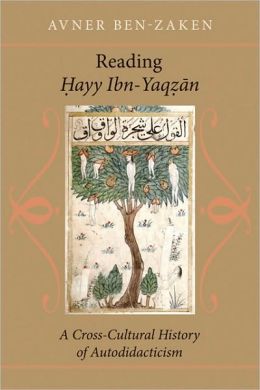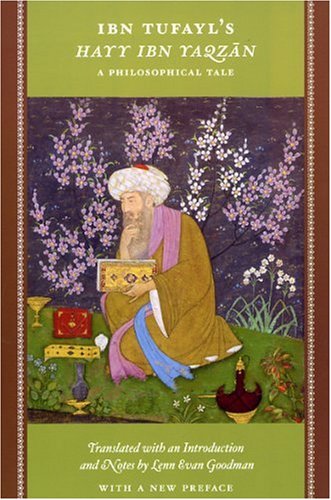Book Review: “Reading Ḥayy Ibn-Yaqẓān” — Rewriting the History of Ideas
Reading Ḥayy Ibn-Yaqẓān is a mesmerizing study that will enchant anyone interested in interdisciplinary, cross-cultural explorations that transform the way we look at the past and the present.
Reading Ḥayy Ibn-Yaqẓān: A Cross-Cultural History of Autodidacticism by Avner Ben-Zaken. Johns Hopkins University Press, 208 pages, $60.
By Justin Grosslight
Avner Ben-Zaken has become a frequently mentioned name among historians nowadays. His research agenda, which examines the transmission of texts and ideas between the Near East and Western worlds, has provoked widespread discussion within the academic community. But for all the controversy that his work has spawned, few reviewers have articulated what has been the primary reason for its well-earned success. Ben-Zaken’s most recent book, Reading Ḥayy Ibn-Yaqẓān: A Cross-Cultural History of Autodidacticism, boldly challenges conventional notions about how modern thought developed, unifying historians of different backgrounds in a dialogue about the history of reading and the emergence of ideas. The bottom line is that Ben-Zaken astutely questions well-entrenched beliefs in intellectual history and the history of science.
Composed in the 1160s by the al-Andalusian savant Abū Bakr Ibn-Tufayl (c.1105–1185), Ḥayy Ibn-Yaqẓān is a speculative fiction about a boy named Ḥayy, who mysteriously appeared on (or was spontaneously generated by) the island of Wāqwāq in the Indian Ocean. Being Wāqwāq’s only human inhabitant, Ḥayy is suckled by a mother gazelle, who passes away when he turns seven. Curious about understanding the circumstances of her death, Ḥayy teaches himself concepts in Aristotelian biology, performs trial and error experiments in physics, and then makes astronomical inquiries. In the end, Ḥayy seeks communion with God to explain what he observes in nature. Using a method described as “historical sampling,” Ben-Zaken outlines the influence of Ḥayy Ibn-Yaqẓān’s intellectual journey across time and space, from twelfth-century Marrakesh to seventeenth-century London. Clocking in at just over 200 pages, Reading Ḥayy Ibn-Yaqẓān presents a compact but captivating history of autodidacticism, exploring how the tale became a recurrent motif in struggles over the control of knowledge between individuals and powerful institutions.
Ben-Zaken’s first chapter examines the cultural malaise that influenced Ibn-Tufayl when he composed Ḥayy Ibn-Yaqẓān. Twelfth-century Marrakesh was embroiled in conflicts between the Almoravid and Almohad dynasties. The Almohad triumph over the Almoravid dynasty hinged on the former melding politically contentious ideas from popular Sufism together with the philosophical work of Abū Ḥāmid al-Ghazzālī (c.1058–1111). Essentially, al-Ghazzālī’s The Revival of the Religious Sciences rejected the authority of pedantic theologians and jurists in favor of more scientific investigations of nature. Though Ibn-Tufayl was a member of the Almohad faction, Ḥayy Ibn-Yaqẓān represents his attempt to reconcile Sufism’s focus on empirical reason with traditional bookish perspectives. Ibn-Tufayl’s choice of setting — on an island antipodal to his world and populated with a gazelle whose name resembles that of al-Ghazzālī — was part of his polemical strategy. Placing the action in a distant world made it possible to promote the importance of autodidactic thought in a way that did not openly offend authorities. Fantasy allowed the author to cloak his views as a thought experiment.
Next, Ben-Zaken shifts his attention to the fourteenth century. Jewish leaders in Barcelona became hostile to the growing practice of teaching secular philosophy to adolescents in Catalonia and Provence. Alarmed that these leaders were turning to excommunication as a way to punish freethinking, the Jewish physician Moses Narbonni (c.1300–c.1362) composed a Hebrew translation of – together with a commentary on — Ḥayy Ibn-Yaqẓān. Narbonni shrewdly titled his commentary on Ibn-Tufayl’s book Yehiel Ben-‘Uriel and renamed the protagonist Yehiel. By doing this, he brazenly attacked the scholar Asher Ben Yehiel (1250–1327), a powerful opponent of teaching philosophy to youth. Narbonni thus turned Ḥayy Ibn-Yaqẓān into a political statement: not only does the story venerate a child who learns philosophy in isolation, but this version also openly associates the name of the work and its protagonist with Narbonni’s opponents. Provence-Catalonia scholars eventually lost their pedagogical campaign — causing Narbonni to flee — but his work became the vessel through which Ḥayy Ibn Yaqẓān came to the attention of early modern circles.
Chapter three situates Ḥayy Ibn-Yaqẓān within the sociopolitical world of Italian humanist Giovanni Pico della Mirandola (1463–1494). Having escaped papal condemnation for promoting natural magic and the Kabbalah in his Theses, Pico sought refuge by residing in Florence. Under the liberal rule of Lorenzo de’ Medici (1449–1492), Florence flourished as an intellectual haven, especially for iconoclastic thinkers who supported the Platonic notion that happiness was tied to a fusion of truth, nature, friends, sensuality, and God. Pico fell into the latter camp, combining his studies with sodomitic practices and a homosexual relationship with the poet Giorlamo Benivieni (1453–1542).
After Lorenzo’s death, Florence quickly became pious and conservative. Reactionary astrological forces, which reviled homosexuality and science, had predicted the demise of Lorenzo de’ Medici, and they became the target of Pico’s fury. For Pico, transcribing (Narbonni’s commentary on) Ḥayy served as a personal defense against an increasingly restrictive Florentine milieu. Biological developments on Wāqwāq were generated by the climate, not the heavens; ideas were formed through the careful empirical investigation of a manipulatable universe. Ḥayy implicitly rejected astrological determinism while promoting scientific thought. Ḥayy also reinforced the mainstream Renaissance view that individuals were the masters of their own social destiny.
Finally, Ben-Zaken takes up the tribulations of Oxford Orientalist Edward Pocoke (1604–1691) and his 1671 edition of Ḥayy. Pococke discovered the work while working in Aleppo, but it was not until after England’s Civil War that the study of autodidacticism became deeply significant to him. Given his Royalist sentiments and polyglot talents, Pococke remained isolato while researching at Parliamentarian Oxford during the Civil War, fearing that articulating his beliefs would jeopardize his welfare. For him, Ḥayy Ibn-Yaqẓān’s themes of solitude and self-learning resonated strongly.
The text also intrigued the philosopher Robert Boyle (1627–1691), Pococke’s later patron, who found its rejection of dogmatism, its discussion of spontaneous generation, and its argument that one can know God through empirical studies consistent with his own experimental values and those of his colleagues at the Royal Society. Following the Civil War, Boyle helped Pococke promote these open-minded views. Pococke retitled his version of the book Philosophus autodidactus for sales purposes, while Boyle promoted it in the Royal Society’s Philosophical Transactions, thus asserting that independent thinking should be part of a serious scientific and religious education.
Articulating the drama of intellectual comprehension through a compelling narrative is no simple feat, particularly because understanding how premodern people read has proven to be elusive for contemporary historians, especially for academics concentrating on reconstructing the transmission of scientific knowledge. Scholars such as Robert Darnton, Roger Chartier, Ann Blair, and Adrian Johns have made significant headway in connecting what early modern people read to their beliefs and feelings, but the majority of publications in the history of reading tend to be myopically focused studies or macroscopic statistical analyses. Eight years ago, Steven Shapin ruefully lamented the “crisis of readership” in the history of science (and related fields), noting that, in an attempt to ensure professional credit, scholars have focused their research on historical minutiae, increasingly filling much of their work with paralyzing disciplinary jargon, limiting their provocative ideas (needlessly) to academic audiences. Readership in historical disciplines has atrophied as a result of these problems.
Reading Ḥayy Ibn-Yaqẓān is a refreshing alternative to the scholarly commitment to the narrow. By focusing on specific cases, the book engages profoundly with extant sources while speaking cogently to the available secondary literature. Furthermore, the study’s engrossing descriptions foster meaningful conversations about scientific ideas without making sweeping, all-inclusive claims. Ben-Zaken has created a lucid space for historical engagement among researchers and laypeople alike — making good on his “proposal for a more unified cultural history with disciplinary fusing.” Anyone who is passionate about reconstructing the transmission of scientific knowledge should relish this book.

Avner Ben-Zaken — he has written a brilliant history detailing the transcultural evolution of scientific ideas.
Ben Zaken’s concrete achievements in this book are manifold. By asserting that Ibn-Tufayl wrote Ḥayy Ibn-Yaqẓān in response to political unrest, the book’s first chapter moves the conversation beyond the customary discussion of philology and textual analysis in a way that invites scholars of medieval Islam to reassess their earlier interpretations. Ben-Zaken’s second chapter emphasizes the much-overlooked role of Jewish actors such as Moses Narbonni, Moses Maimondes (1135–1204), and Jochanan Alemanno (c.1435–1504?) — among several others — in making intellectual history. Chapter three reinvigorates Pico della Mirandola, who is principally remembered for his humanistic orations, by focusing on his anti-astrological, homosexual, and Kabbalistic interests.
Most significantly, Ben-Zaken’s fourth chapter challenges the prevailing historiography of early modern science, indicating that the roots of experimental natural philosophy did not originate with Robert Boyle and his colleagues in the Royal Society. Instead, the foundations of experimentalism were built with the spread of Ḥayy Ibn-Yaqẓān throughout al-Andalus and al-Maghrib five centuries earlier. Furthermore, Ben-Zaken implies that Boyle’s goal of consensus building among witnesses for confirming experimental practices was not his own idea; rather, it was borrowed from the Dutch-born jurist and Parisian denizen Hugo Grotius (1583-1645).This claim challenges assumptions at the heart of Steven Shapin and Simon Schaffer’s research, which has guided history of science scholarship over the past generation.
Despite these brilliant accomplishments, I have some quibbles with the book. My major reservation is that some of Ben-Zaken’s actors are more tenuously connected to Ḥayy Ibn-Yaqẓān than his narrative suggests. For example, Pico della Mirandola only wrote about his familiarity with Ḥayy Ibn-Yaqẓān once — in an autobiographical reference in his first book, Disputationes adversus astrologiam divinatricem (published posthumously, 1495). Also, Pico never published his own Latin translation of the book. Furthermore, versions of Ḥayy Ibn-Yaqẓān fell into the hands of a number of readers who do not figure in Ben-Zaken’s text. How did they react to Ḥayy’s challenging ideas? It would be interesting to know why Ben-Zaken chose to focus on the group of thinkers who appear in his book. An alternative history of autodidacticism — potentially bypassing Ḥayy Ibn-Yaqẓān entirely — could emerge from an analysis of, for example, Thomas More’s Utopia (1516), Montaigne’s Essays (first “A” edition 1580), and René Descartes’s Discourse on Method (1637).
Nevertheless, Ben-Zaken tells a fabulous yarn about the transcultural evolution of scientific ideas. With humanities projects increasingly targeted for the margins of academic attention, Reading Ḥayy Ibn-Yaqẓān serves as a poignant reminder of why historical research is important to us all. As each of Ben-Zaken’s sketches demonstrates, valiant individuals challenged the norms of their era in a quest to become independent “modern men” guided by reason rather than blind faith. Reading Ḥayy Ibn-Yaqẓān is a mesmerizing study that will enchant anyone interested in interdisciplinary, cross-cultural explorations that change the way we look at the past and the present.
An interview with Avner Ben-Zaken (presented by Johns Hopkins University Press) about Reading Ḥayy Ibn-Yaqẓān: A Cross-Cultural History of Autodidacticism and an earlier book, 2010’s Cross-Cultural Scientific Exchanges in the Eastern Mediterranean, 1560-1660 .


